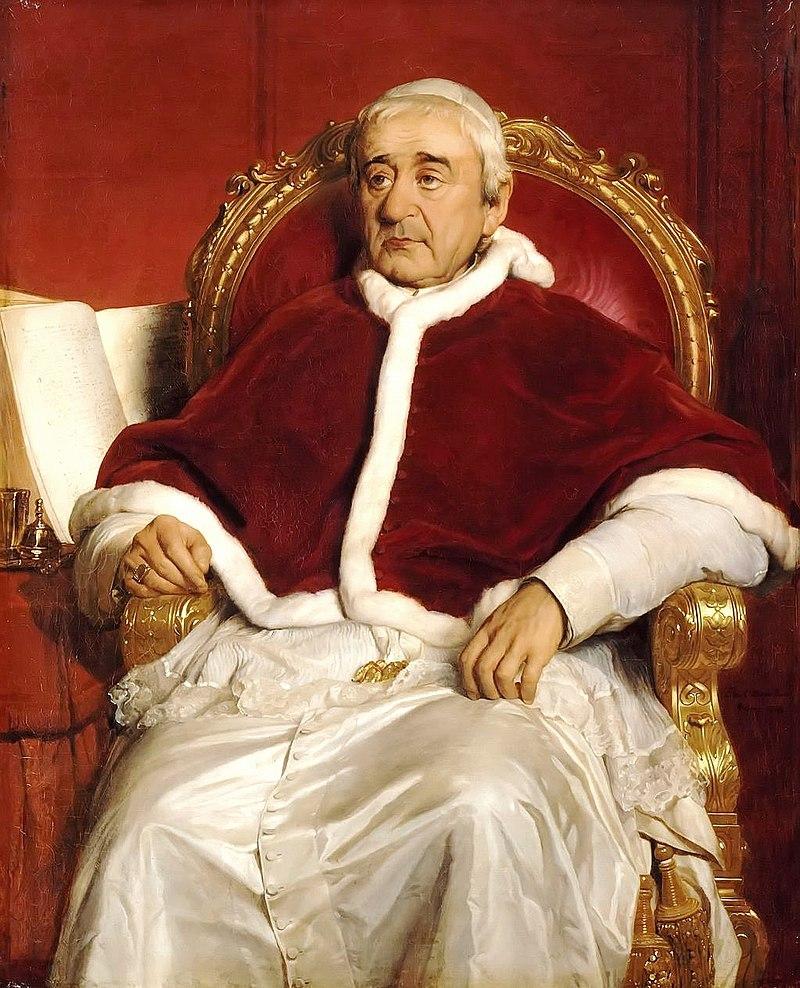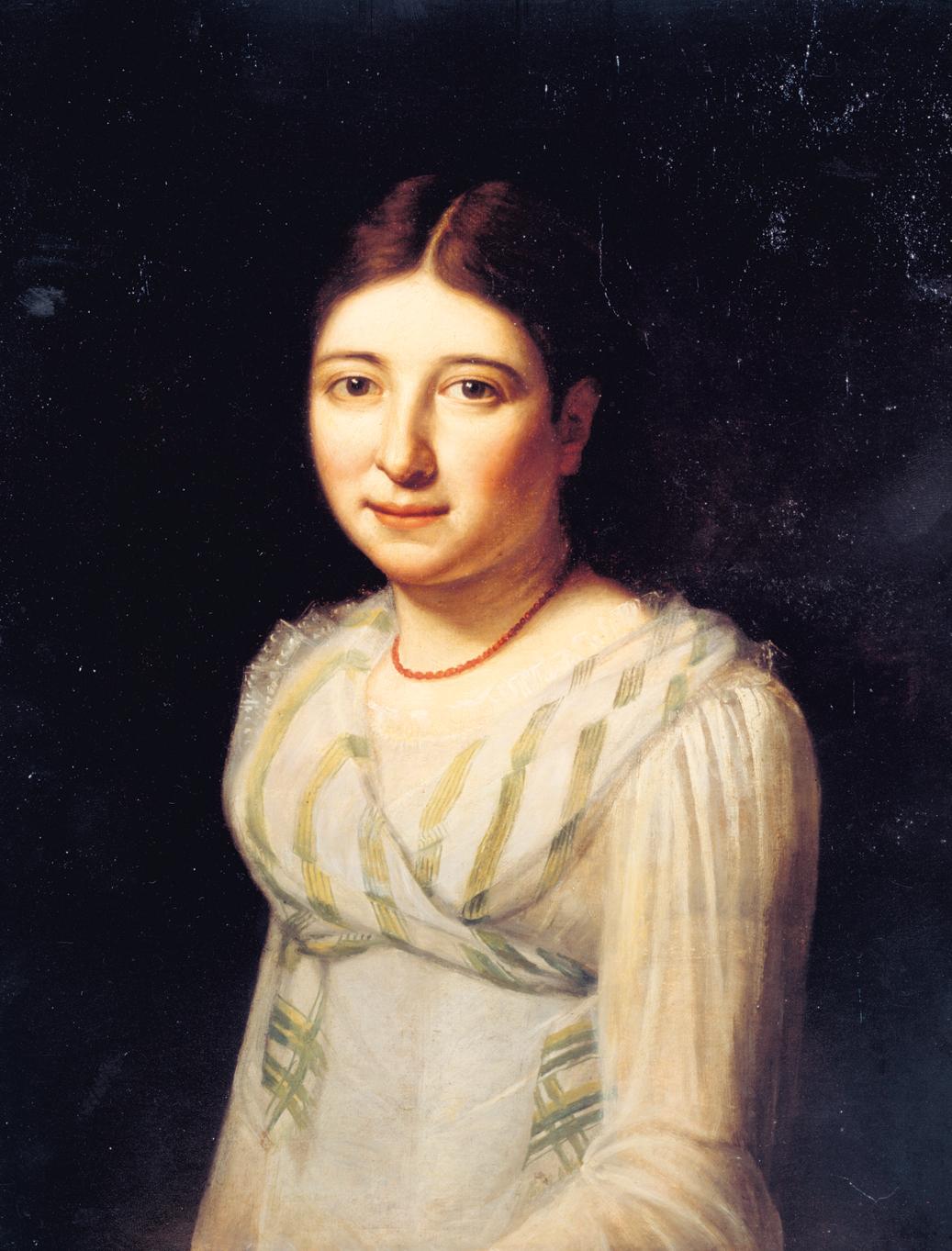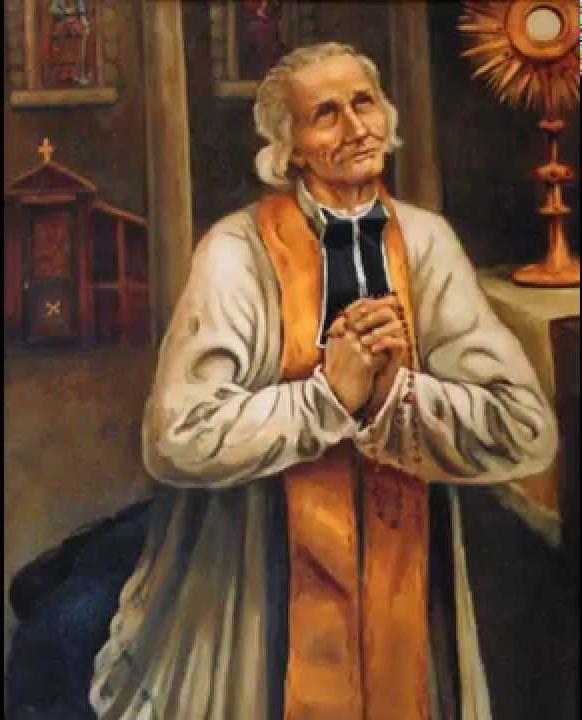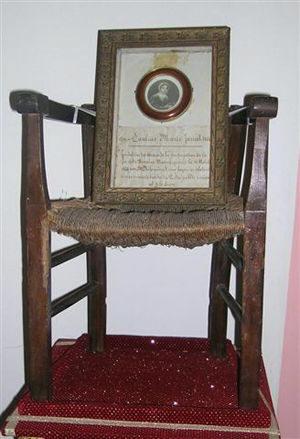Saint Philomena and Pauline Jaricot
Pauline's illness is considered incurable, but she wants to go to Mugnano, Italy, even though the journey is difficult, even crazy, given the seriousness of her condition. Paolina is suffering from a serious heart problem, which manifests itself in palpitations; she cannot eat and must be very careful not to suffocate. She has a moment of respite at the end of a novena to St Philomena and, although she is gravely ill, she plans to go to Mugnano to visit the tomb of Saint Philomena, passing through Paray-le-Monial and Rome to receive the Pope's blessing.
A mysterious attraction pushed Pauline towards the tomb of Philomena, considered a martyr, but how to express this wish desire and above all how to get there from Lyons, since she was so ill as to she could no longer bear the slightest shock?
In Rome, she was welcomed at Trinità dei Monti by her friends, the Sisters of the Sacred Heart. Considering her extreme weakness, Gregory XVI honoured her with a visit. Seeing Pauline in Rome in agony, Pope Gregory XVI commends himself to her prayers 'as soon as she reaches heaven'. Pauline replied: 'Yes, Most Holy Father,
I promise you. But if on my return from Mugnano I should go to the Vatican, would Your Holiness deign to proceed without delay to the definitive examination of the cause of Saint Philomena?" And the Pope replied: 'Yes, yes, my child, for then there would be a miracle of the first order'!
The Pope promised everything, certain that he would not have to fulfil it: he then said in Italian to the superior nun, undoubtedly belonging to the Sisters of the Sacred Heart of the Trinità dei Monti, Pauline's friends: 'She seems to have come out of the grave. She will not return' (Catherine Masson, Pauline Jaricot, op. cit., p. 314).
Pauline Jaricot arrived in Mugnano on 8 August 1835, two days before the feast of Saint Philomena. Despite being in excruciating pain, she was joyfully welcomed as foundress of the Propagation of the Faith and the Living Rosary.
Pauline prayed for three days sitting on a chair before the body of St Philomena.
On her return from Mugnano to Rome, Pauline presented herself at the Vatican. The Pope cannot believe his eyes. He asks Pauline to walk back and forth, thanking God for doing wonders for her. "Pauline then asks the Pope to fulfil her wish and erect a chapel to St Philomena. "Yes, my daughter," he replied, "we will try to solicit the study of her cause" and authorised her cult on 13th January 1837" (Catherine Masson, Pauline Jaricot, op. cit., p. 316).
Gregory XVI kept Pauline in Rome for almost a year so that the miracle in her favour could be ascertained. During her stay in Rome, Pauline had several meetings with Gregory XVI, almost always attended by Cardinal Luigi Lambruschini (former nuncio in Paris, who became cardinal on 30 September 1831 and Secretary of State in 1838, and who obtained from Pope Gregory XVI the solemn approval of the Living Rosary), during which they often spoke of the trials the Church was facing and the dangers in France.
Pauline took advantage of her stay to visit Rome and the Vatican, but also to write texts, in particular her autobiography. It was at this time that the Living Rosary was affiliated to the Dominican Order (Catherine Masson, Pauline Jaricot, op. cit., p. 317).
Leaving Rome on 25 May 1836 for Florence and Bologna, passing through Loreto, Pauline promised to return.
Her return to Lyons was hailed as a miracle and she resumed her work. "Pauline, who was 37 years old, recovered her health "with her intelligent physiognomy, imbued with meekness, her large eyes spiritualised by the flame of ecstatic effusions". writes David Lathoud, but also with "her bonnet, the black mantle of her short pilgrim's coat, the euculogy in her hand, one could easily take her for a religious" (Catherine Masson, Pauline Jaricot, op. cit., p. 317).
In the house of Lorette, Pauline instructed Abbot Rousselon to have a chapel erected to Saint Philomena, in gratitude for her healing at the tomb of the saint. This was soon erected near the slope of Saint-Barthélemy: a small chapel with about twenty seats, built by the architect Antoine Chenavard (1787-1883) and which reproduces in miniature the church of Mugnano. It was inaugurated in November 1839. Pilgrims can go there at any time to pray without passing through the house or the area fenced area of the property.
As soon as she returned in 1836, Pauline went to Ars, some forty kilometres from Lyons, to bring back a relic of Philomena: fragments of her humerus. Jean-Marie Vianney observed Pauline's recovered health with admiration. "Her heart overflows with gratitude to God for this miracle, but shows no astonishment, because she knows that everything is a miracle that comes from God. They remain silent for a while. Two years have passed since their last meeting. Pauline is full of joy, having waited so long for this moment of happiness" (Jean Barbier, Le curé d'Ars et Pauline Jaricot, Lyon, Ed. & Imprimeries du Sud-Est, 1952, p. 90-91).





Copyright 2023 © All right reserved